
We had to be in Wellington by early afternoon in order to catch the ferry to the south island. However, we had enough time to visit the Royal New Zealand Air Force museum at Ohakea air force base just south of Bulls. A series of displays shows the rise of the RNZAF to its World War 2 peak and subsequent decline to the point where Ohakea will soon be their only operational base. The museum has many interesting exhibits and if you have any interest in aviation it’s well worth a visit.
![]()
![]()
![]()
![]()
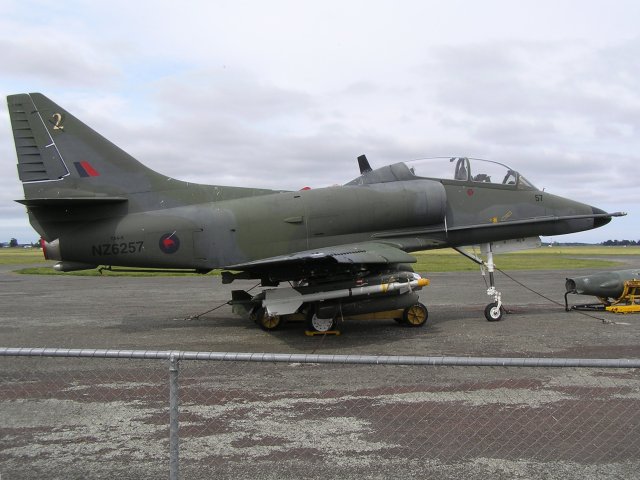
![]()
![]()
![]()
![]()
This forlorn A4 Skyhawk, one of New Zealand’s last operational fighter aircraft, sits on the tarmac outside the museum.
From Ohakea we headed down SH1 to Wellington, the capital city of New Zealand. We had a bit of time before we had to be at the ferry terminal so we drove through the city centre to look at the parliament buildings. From there we headed down to the harbour and the InterIslander ferry terminal. On arrival we were told that our sailing would be delayed by an hour due to “technical problems” at the harbour in the South Island. It wasn’t worth trying to head back into the city centre for a bit more sightseeing so we waited in the car park. After a while the ferry operators redirected all of the waiting cars to the faster catamaran service. We were left waiting with the other motorhomes and some lorries. A lorry full of rather smelly sheep was parked next to us so we were pleased to see the ferry enter the harbour and dock.
The bow of the ferry is fixed and the only vehicular access is via the stern. It was quite a big ship as even articulated lorries can turn around on the vehicle deck. This allows everyone to drive on and drive off. Beneath the vehicle deck is a railway deck where cargo wagons are shunted on and off.
![]()
![]()
![]()
![]()
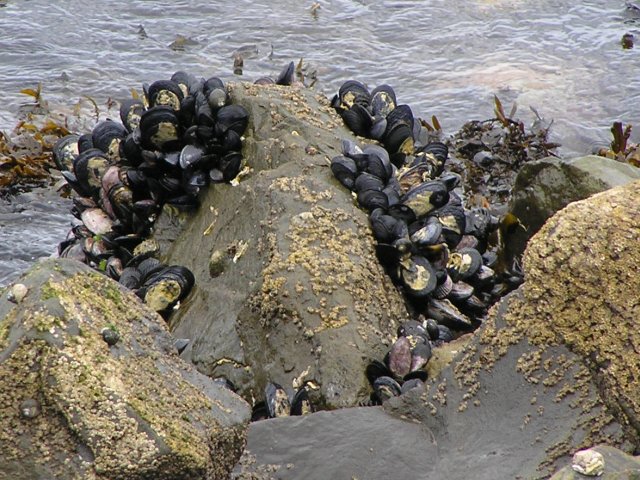
![]()
![]()
![]()
![]()
The water in Wellington Harbour is surprisingly clean. This mussel covered rock was by the side of the ferry terminal car park
![]()
![]()
![]()
![]()
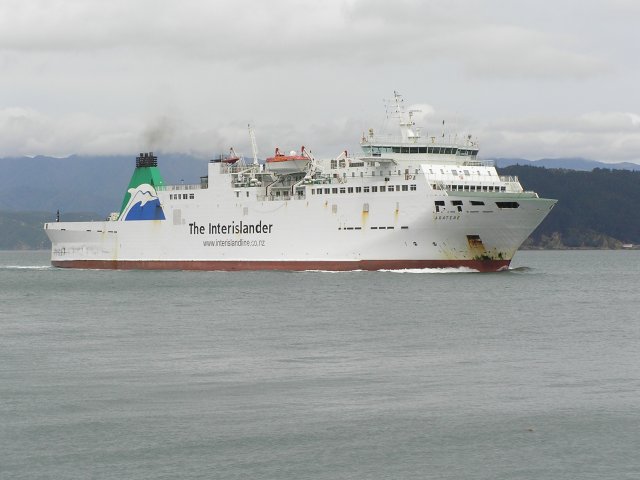
![]()
![]()
![]()
![]()
We travelled from the North to the South island on the ferry Aratere. Here she is entering Wellington harbour
![]()
![]()
![]()
![]()
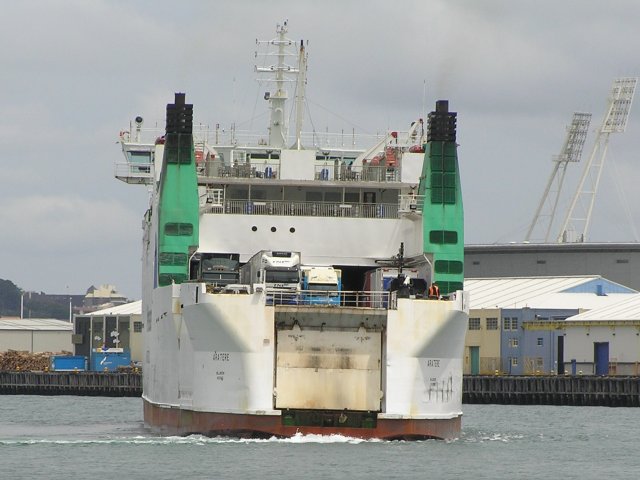
![]()
![]()
![]()
![]()
The ferries make a sharp turn and reverse into the dock and loading bay. You can see the upper vehicle deck and the stern door to the lower railway deck
As the car passengers had been transferred to a faster ferry out ship was fairly empty. We initially stood on the observation deck at the bow but there was a chill wind so after the ferry had left the dock we found some seats inside. The trip between the islands notorious for often being a rough crossing but it was fairly calm for us. There was a small swell causing the boat to move a little but once we had entered the Tory Channel the water was almost flat. As we approached Picton, the harbour in the South Island, it started to rain. This drizzle continued for the rest of the day.
![]()
![]()
![]()
![]()
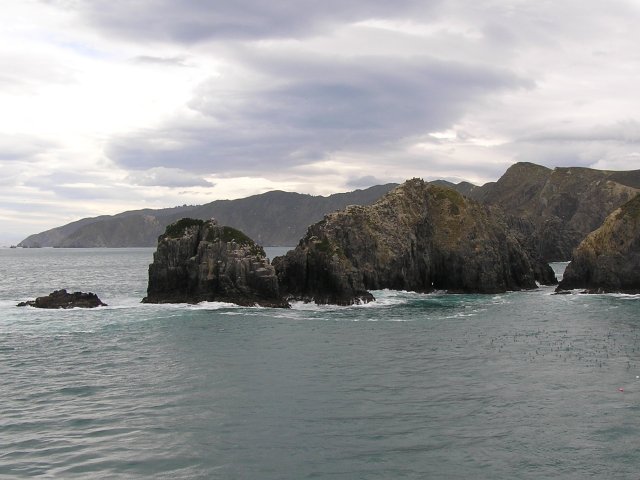
![]()
![]()
![]()
![]()
The rocky entrance to the Tory Channel leading to Queen Charlotte Sound and Picton
After we had docked in Picton and disembarked we headed to Blenheim. We stopped for the night in the Blenheim Bridge holiday park. I had a standard cabin which was quite modern but a herd of elephants seemed to be staying in the cabin next to mine - at least, that’s what it sounded like! We had dinner from a fish & chip opposite the campsite. It was literally “Fish & Chips” as the fish is simply the catch of the day.